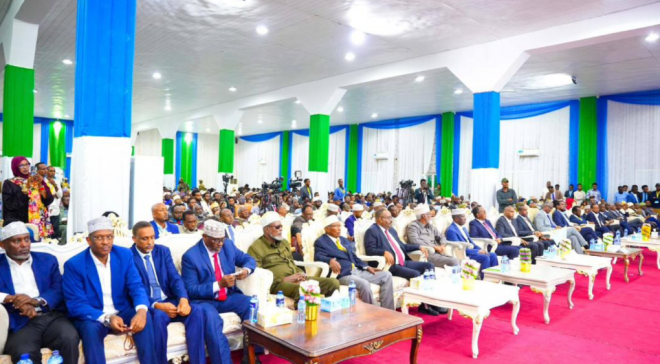Preparing for El Niño in Somalia
By Abdirashid M. Dahir
Somalia is more likely to experience heavy rains that could leave more than 900,000 people living on floodplains along Jubba and Shabelle rivers in central and southern Somalia ‘destitute’ according to early alert by Food and Agriculture Organization of the United Nations.
Riverine areas have all along been bruised by flash as well as pluvial floods due to new wild flood irrigation in dry seasons, deterioration of flood control structures, poor management of River basins, increased bed levels because of high sediment yields and dilapidated pre-war hydraulic structures.
The country can’t cope with riverine floods as a result of overtopping and very high rainfall intensity as experts predict.
Should flood risks become imminent, federal government of Somalia which is grappling with challenges in security front can’t deal with large-scale disaster in the aftermath of El Niño.
In October and December seasonal rainfall, Somalia may ruefully brace up for severe El Niño conditions including flooding and possible landslides.
Thanks to early warning of FAO Water and Land Information Management Unit (SWALIM), world is predicting that flooding could very hard hit large parts of the country, most specifically in Southern Somalia. This is key response against flooding and it should be taken seriously to prevent crops and villages from being washed away and submerged.
Data gathered by SWALIM show that Somalia used to enjoy massive irrigation infrastructures such as 10 barrages of which nine were built over Shabelle River and the remaining one on Jubba for flow controls.
The availability of technical information about the floods to be expected if water spills over the banks of Shabelle and Jubba rivers will be flood abatement measure. Despite under-resourced government bodies, i am sure that a humanitarian staging area can be the most preferred cushion.
From my perspective, Somalia needs to adopt concrete measures from the outcome of IGAD’s climate Predictions and Application Centre meeting which will bring together regional and international climate experts in Tanzania on Monday.
Here, I suggest that some measures be possibly implemented by concerned bodies on the ground had officials gone at length for framing of policies on hazard responses.
First, topography of Shabelle River is complex and the River spans longer than Jubba, henceforth Somali authorities should prohibit certain land uses on more flood prone flood plains along either river.
Second, improving flood proofing techniques including sandbags as has been the case and the construction of water proof walls.
Third, increase in monitoring and predictions, especially data on rainfall and stream discharges by FAO and its partners, so that they can produce accurate predictions translating into the very timing of flood surges.
And fourth, construction of flood control structures, such as dykes and levees as well as modifications including artificial linings, relief channels and diversion to low impact flood plain zones to both Jubba and Shabelle Rivers.
Unpreparedness for El Niño is potentially dangerous in a country where all hydraulic structures and economic infrastructure need to be brought back into operation.
Enhanced rainfalls too might complicate the situation and would hamper timely coordination between parties awaiting uphill task to be executed at source.
As Jubba and Shabelle tail reaches are extremely unstable and appear alluvial in nature, Somalia government must confront El Niño with expertise and the concern that they pass through critical economic areas.
Billion cubic meters of water would have been assessed scientifically if partners and bodies had employed two dimensional river hydraulic models. Against the backdrop of absence of relevant institutions, efforts to develop integrated flood management plan need to get underway for government offices to adopt sound river management measures via updated topographical and geomorphological data.
Abdirashid M. Dahir writes about Somalia's economic infrastructure. Follow him on twitter @somaliajunkie







